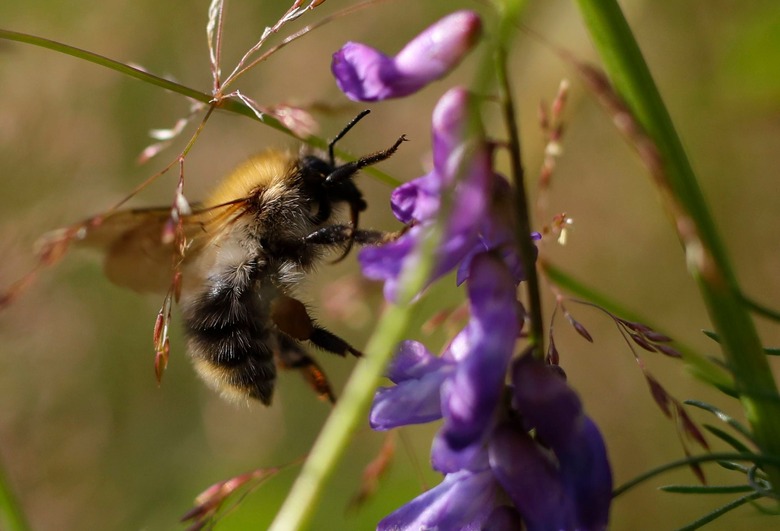Pesticides Are Messing With The Brains Of Baby Bees
In case you hadn't already heard: Bee populations are being devastated on a global scale due to the use of pesticides and other agricultural chemicals. This is bad news for a variety of reasons, but at the top of the list is the fact that many bees are vital pollinators that allow plants to reproduce. Dramatic downward shifts in the number of such insects can have a devastating effect on the environment, affecting everyone above them, including humans.
Chemicals designed to kill insects are obviously not good for bees in general, but a new study suggests that the effects of pesticides on the declining bumblebee population go beyond simply killing full-grown adult bees.
The research, which was conducted by scientists at Imperial College London, reveals that bee larva that are exposed to pesticides actually grow differently. More specifically, baby bees that ingest pesticides have altered brain development and impaired functioning. These effects are permanent, leading to generations of bees that are likely far less effective at pollinating.
"Bee colonies act as superorganisms, so when any toxins enter the colony, these have the potential to cause problems with the development of the baby bees within it," Dr. Richard Gill, lead researcher, said in a statement. "Worryingly in this case, when young bees are fed on pesticide-contaminated food, this caused parts of the brain to grow less, leading to older adult bees possessing smaller and functionally impaired brains; an effect that appeared to be permanent and irreversible."
This means that the use of pesticides on a bee population has effects that stretch on for generations. Even as parts of the agriculture industry begins to move away from such detrimental chemicals, bee populations continue to struggle and find it difficult to rebound.
"These findings reveal how colonies can be impacted by pesticides weeks after exposure, as their young grow into adults that may not be able to forage for food properly," Gill explains. "Our work highlights the need for guidelines on pesticide usage to consider this route of exposure."
